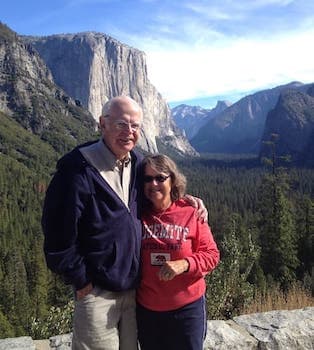
Curated with aloha by
Ted Mooney, P.E. RET

The authoritative public forum
for Metal Finishing 1989-2025

-----
Bend testing equipment
Q. Our shop needs to bend test 1"x4"x.04" 4130 steel coupons with various plating on them. I would appreciate any recommendations on a bend tester to simplify this operation.
Mary CeraProcess Engineer - Oklahoma City, Oklahoma
2007
GARDCO = Paul N. Gardner Co.
A. A typical requirement is "The test specimen shall be bent
180° over a mandrel of diameter 4 times the thickness (0.4 inch minimum) of the specimen."
Since 4 x 0.04" = 0.16" < 0.4", the preferred mandrel is 0.4" diameter (larger diameters lessen the rigor & value of the test).
Two mandrel devices are shown in ASTM D522, 'Standard Test Methods for Mandrel Bend Test of Attached Organic Coatings.' One is a rather standard hand-operated sheet metal bender in which one specimen end is clamped and then a pivoting plate (with handle for leverage) bends the extending specimen over the mandrel. In this device, a tapered mandrel of diameter 1/8" to 1.5" is used. The mandrel ends are clamped in place, so a straight rod of desired diameter could be substituted.
Also shown in ASTM D522 is a cylindrical mandrel test apparatus which requires bending solely by hand (fingers). Consists of 2 pentagon shaped plates, with a mandrel of a different diameter (3/8" to 1") held between at each corner. Both devices are available from Paul N. Gardner Company.
Perhaps the most suitable device would be a brake press for sheet metal of the type known as an airbrake. The specimen is placed across
2 spaced rollers between which the rounded die or mandrel is brought down. I haven't seen any small enough for lab use; perhaps someone can suggest a supplier.
- Goleta, California
Rest in peace, Ken. Thank you for your hard work which the finishing world, and we at finishing.com, continue to benefit from.
Q, A, or Comment on THIS thread -or- Start a NEW Thread